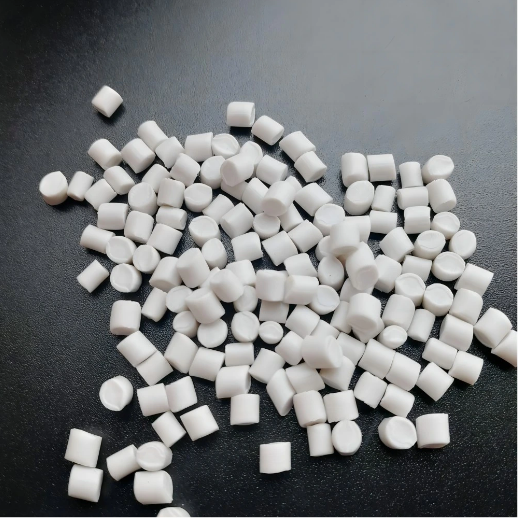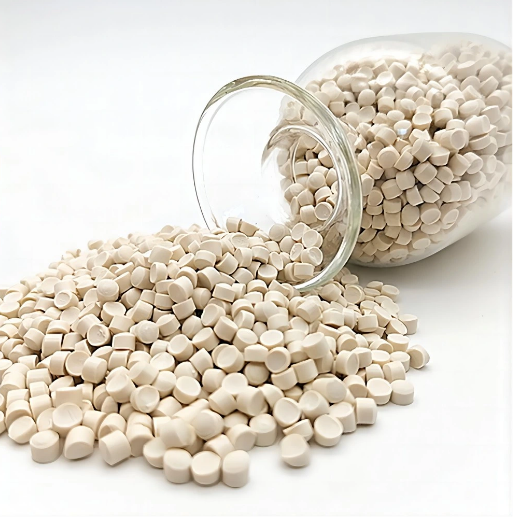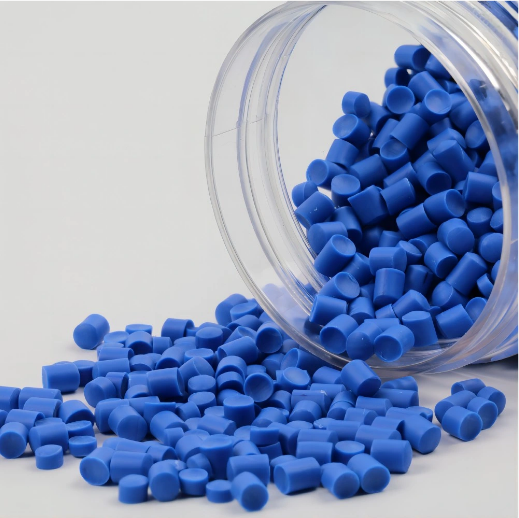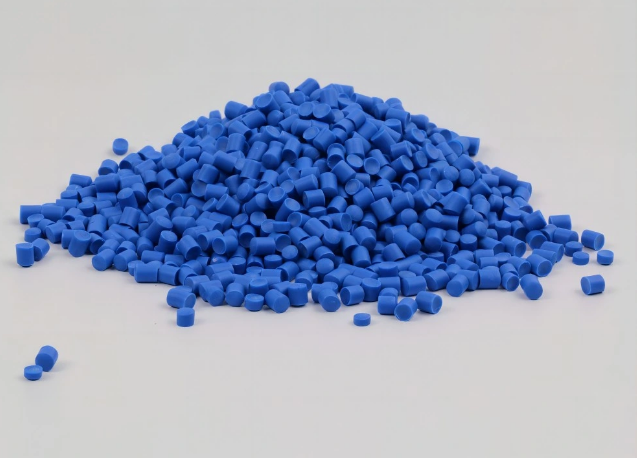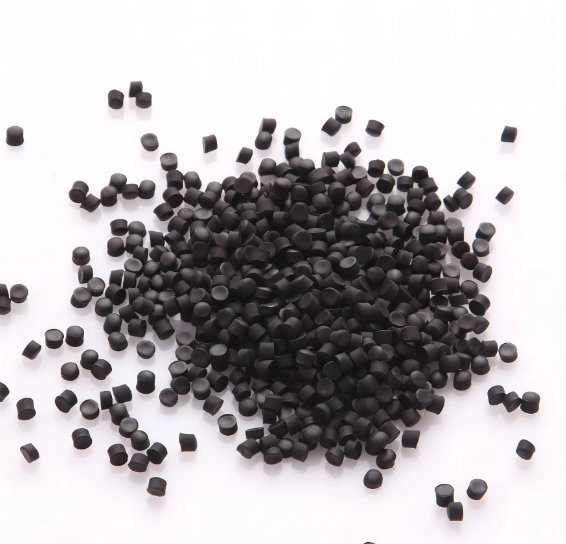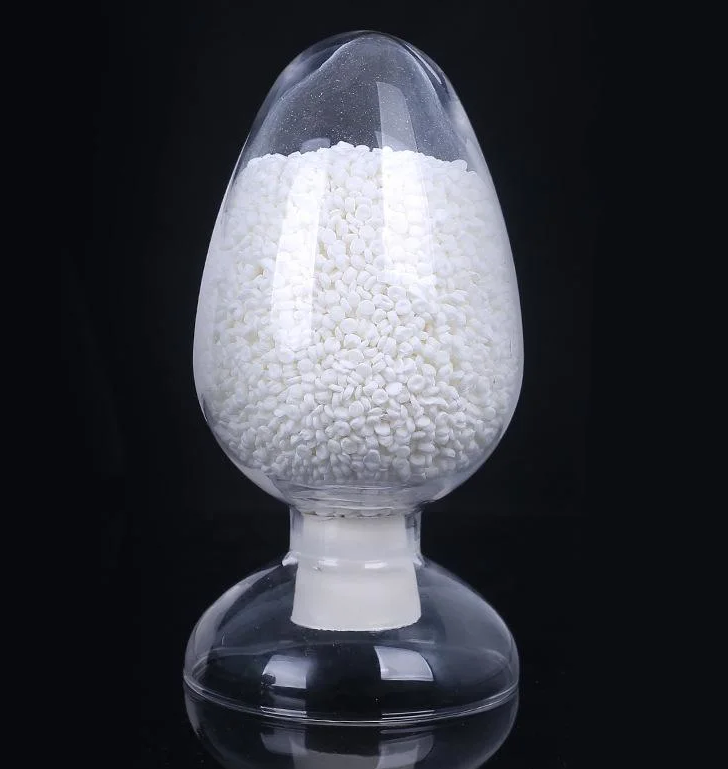Shanghai Gengyun Industrial Co., Ltd
Polyolefin Sheath Compound
T-PO009 Series Green Environmental Low Smoke, Halogen-Free, Flame Retardant Polyolefin Cable Material Products For Power Cables, Control Cables, Signal Cables, Rf Cables, Etc
Green Environmental LSZH Low smoke zero halogen sheathing material do not contain halogens and do not produce toxic gases when burned. Thus reducing harm to the environment and human body. The amount of smoke produced by low smoke halogen-free sheathing materials during combustion is much lower than that of traditional cable sheathing materials such as PVC, which helps to improve visibility during fires and facilitates personnel evacuation and fire rescue. The low smoke halogen-free sheathing material complies with RoHS environmental protection standards.
Features
- Good flame retardancy;
- Low toxicity and low corrosion;
- lszh low smoke zero halogen material has heat and cold resistance;
- Excellent processing performance;
- Good mechanical properties. Such as tensile strength and elongation at break, can meet the use requirements of cables in different application scenarios.
Application
- LSZH Low smoke zero halogen Cable sheath material is suitable for cable lines in transportation projects such as subways, high-speed railways, highways, bridges, etc.;
- Widely used in communication systems such as telephones, computers, and networks;
- Green Environmental Low smoke halogen-free sheathing materials are also often used in cable lines in power systems. Such as power generation, transmission, substation, and distribution;
Packaging, Storage and Transport
The material must be supplied packaged in such a way as to be protected during transport, handling and storage. The packaging must be in plastic bags, “bigbag”, or cardboard box. The packaging must have adequate strength and be free of impurities that may contaminate the product and be protected against moisture as well.
Specification of Low Smoke Zero Halogen Material
| High Anti Cracking Level, Can Be Used For The Outer Sheath Of Steel Strip Armored Structures. The Flame Retardant Level Can Comply With Ec60332-1,Iec60332-3-(22,23,24),Ul1666 Ofnr,Cpr B2co,Gb/T31247-2014 B¹ Etc. |
| Reference Standard GB/T32129-2015 Typical Physical And Mechanical Properties Are As Follows: |
| Item | Unit | Test Method | Typical | |||||||||||||||||||||||||
| Density | g/cm3 | GB/T1033.1 | 1.46 | |||||||||||||||||||||||||
| Tensile Strength | Mpa | GB/T1040.3-2006 | 12.5 | |||||||||||||||||||||||||
| Elongation At Break | % | GB/T1040.3-2006 | 195 | |||||||||||||||||||||||||
| Low Temperature Impact Embrittlement Temperature (-25 ºC) | … | GB/T 5470-2008 | Pass | |||||||||||||||||||||||||
| Volume Resistivity (20 ºC) | Ω.m | GB/T1410-2006 | 1.7×1010 | |||||||||||||||||||||||||
| Smoke Density 25kw/m2 | Without Flames | … | GB/T8323.2-2008 | 245 | ||||||||||||||||||||||||
| With Flames | … | GB/T8323.2-2008 | 45 | |||||||||||||||||||||||||
| Oxygen Index | % | GB/T 2406.2-2009 | 33 | |||||||||||||||||||||||||
| Thermal aging performance: | Tensile Strength | Mpa | GB/T 32129-2015 | 13.5 | ||||||||||||||||||||||||
| 100ºC*240h | Maximum Change Rate Of Tensile Strength | % | 8 | |||||||||||||||||||||||||
| Elongation At Break | % | 173 | ||||||||||||||||||||||||||
| Maximum Change Rate Of Elongation At Break | % | -11.3 | ||||||||||||||||||||||||||
| Thermal Deformation(90ºC) | % | GB/T8815-2008 | 25 | |||||||||||||||||||||||||
| Brinell Hardness HA | MV/m | GB/T1408.1-2006 | 22 | |||||||||||||||||||||||||
| Heat Resistant Stress Cracking(130ºC*1h 5KG) | GB/T 32129·2015 | Uncracked | ||||||||||||||||||||||||||
| Acidity Of Gas Released By Combustion | HCI & HBr | % | GB/T17650.1-1998 | 0 | ||||||||||||||||||||||||
| HF | % | IEC 60684-2:2003 | 0 | |||||||||||||||||||||||||
| PH | — | GB/T17650.2-1998 | 5.5 | |||||||||||||||||||||||||
| Conductivity | μS/mm | GB/T17650.2-1998 | 7.5 | |||||||||||||||||||||||||
| *Appearance: Uniform color and no impurities. Evaluation: Qualified, meeting the requirements specified by ROHS. | ||||||||||||||||||||||||||||
| Note: The above typical values are random sampling data. | ||||||||||||||||||||||||||||

